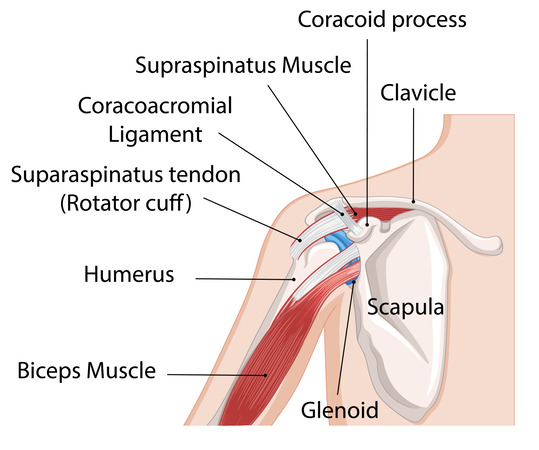Osteoarthritis of the shoulder
What is osteoarthritis of the shoulder?
Osteoarthritis (OA) is a common condition that can affect any joint causing the joint to become stiff and painful. However, it is less common in the shoulder. You may be diagnosed with OA if you have activity related pain, are over the age of 45 with early morning stiffness (EMS) lasting 30 minutes or less (or no EMS).
Osteoarthritis of the shoulder may also occur if you have had a previous injury to the shoulder or when there has been more stress on the joint.

Glenohumeral (shoulder)osteoarthritis is defined as progressive loss of articular cartilage resulting in bony erosion, pain, and decreased function. It may be secondary to other conditions such as inflammatory joint conditions, for example, gout or rheumatoid arthritis. Most shoulder arthritis is a result of non-specific risk factors such as advancing age and hereditary factors.
What happens to the joint?
Joints are exposed to a low level of stress in everyday life. Usually the body repairs the damage and you may not feel any symptoms. In OA the protective cartilage on the ends of the bones becomes thinner and tiny bits of extra bone (called osteophytes) can form on the ends of the bones, changing the shape of the joint. The joint may then become painful and more difficult to move. Some people may notice the joint becomes noisy with a grating or cracking sensation as the joint is moved. It may be painful when lying on your side or when reaching overhead.
It can feel stiff especially in a morning or when the joint has not been moved for a while. Symptoms are not directly related to the changes seen on, for example, an x-ray. Symptoms have been found to be related to a complex interaction of structural changes, biological processes and psychological factors.
What treatment is available?
Various treatments and self-management strategies are available. Treatment will depend on how much pain there is and how stiff the shoulder has become. If you are overweight or obese, weight management is important. Exercises help strengthen weak muscles, improve range of movement, ease or prevent stiffness and maintain function. Some people find the local application of heat or cold helpful.
Pacing or modifying activities can also help manage the symptoms. A healthcare professional such as your general practitioner (GP) or pharmacist may recommend oral analgesics such as paracetamol or non-steroidal anti-inflammatory drugs (NSAIDs). The National Institute for Health and Care Excellence (NICE) guidelines do not recommend acupuncture.
Transcutaneous electrical nerve stimulation (TENS) can be assessed if appropriate. A steroid injection may be offered to ease moderate or severe pain. The steroid is given with local anaesthetic. It helps to reduce inflammation and make it more comfortable to move the arm and do the exercises. It is not recommended to have more than two or three injections into your shoulder as this may damage the joint further.
What happens if the pain and stiffness gets worse?
It is important to explore non-surgical treatments first. However, if the pain is becoming more severe and is making your function difficult or having a substantial impact on your quality of life, investigations such as an x-ray may be recommended. This shows how many changes there are in the shoulder.
A healthcare professional such as your GP, physiotherapist or nurse practitioner can discuss the benefits and risks of treatment options. A referral to an orthopaedic surgeon can be made if you are considering surgical options.
These options include total shoulder joint replacement. A reverse shoulder replacement (where the ‘ball and socket’ are reversed) may be suggested if there has been damage to the muscles and tendons as well as the joint.
Exercises would be recommended after any surgery to help improve movement and function. Whichever treatment is recommended, it is important that you discuss your preferences and any concerns you have with your health care professional.


